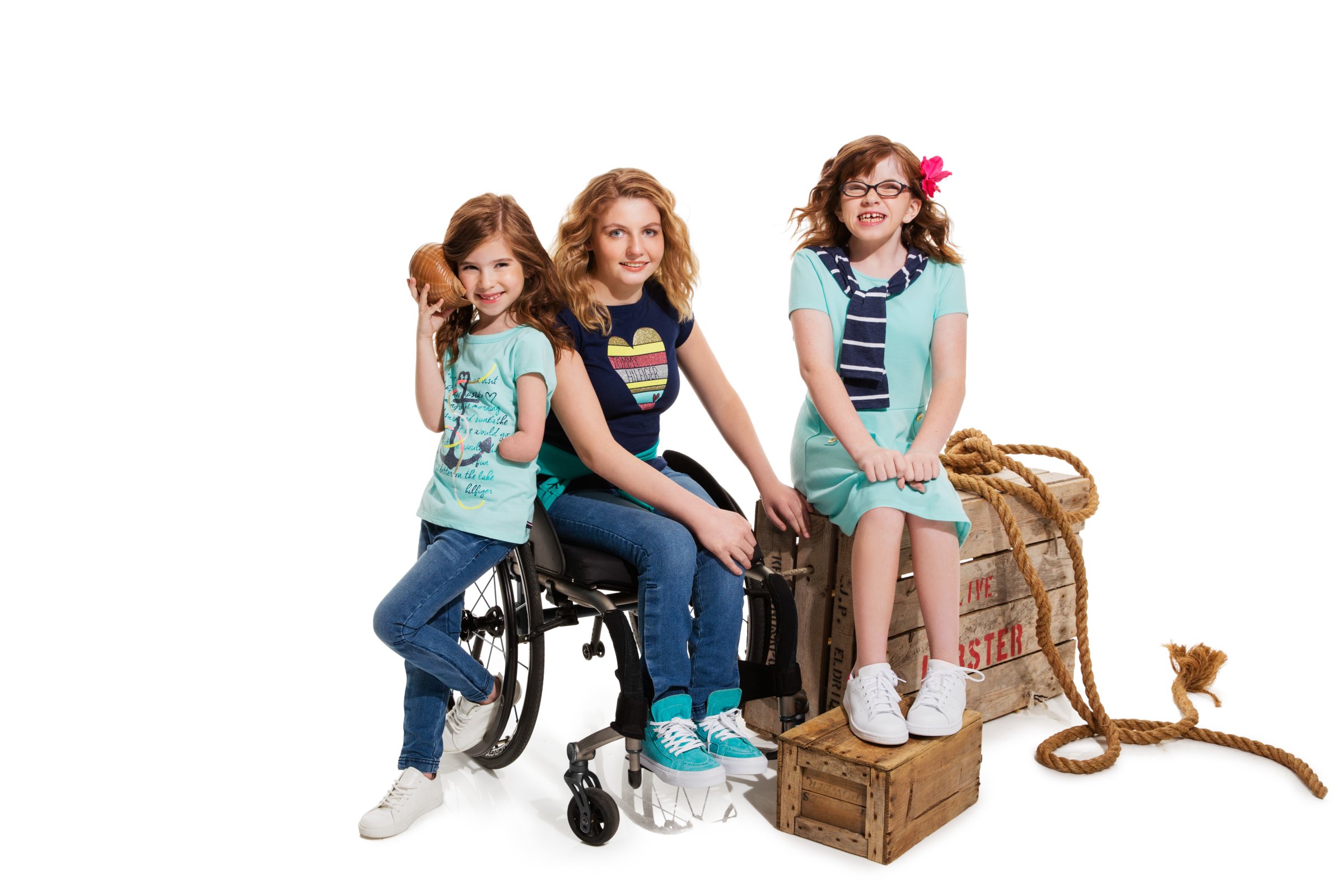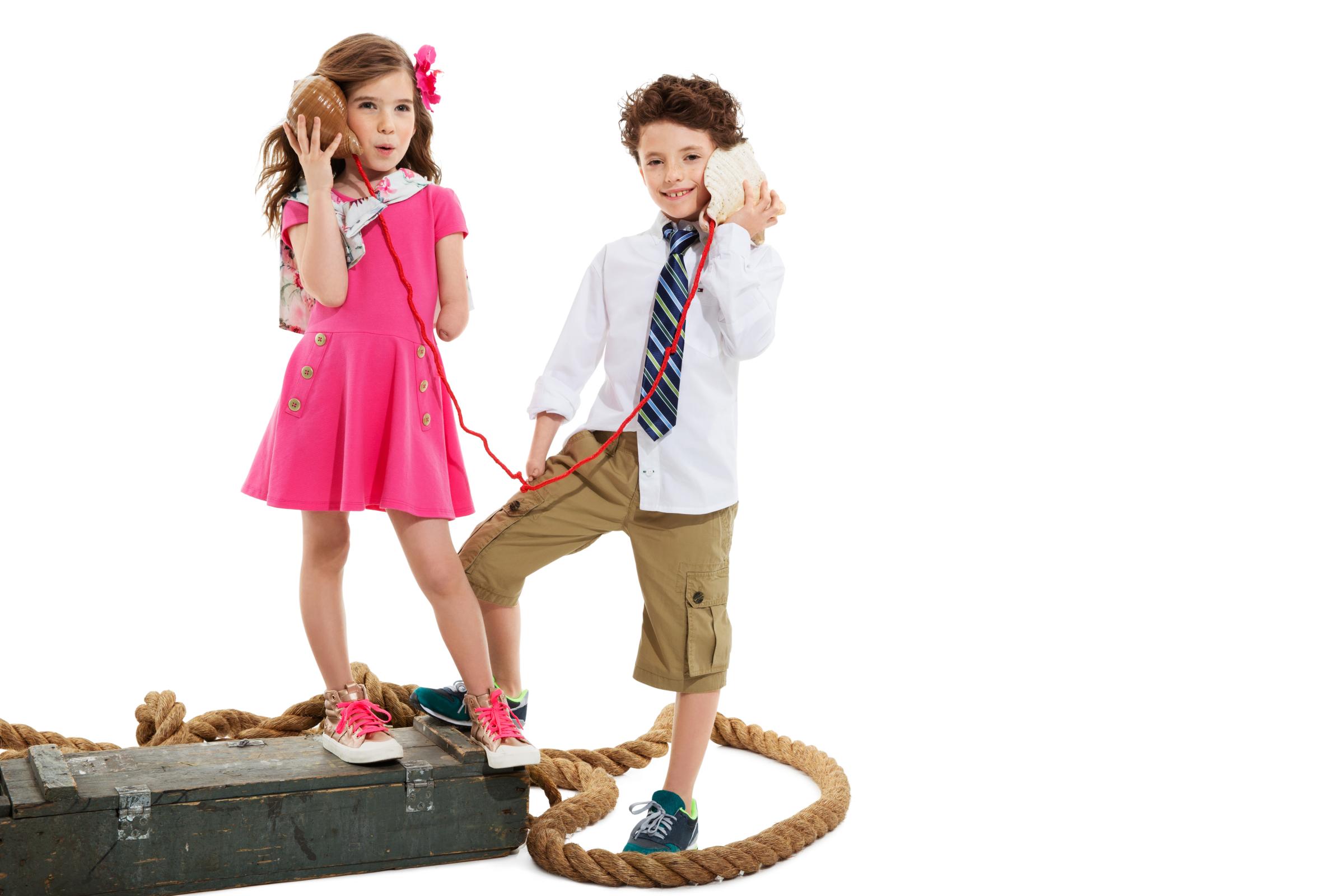
My son Oliver was born with muscular dystrophy, a disease that causes weakness and loss of muscle mass. Oliver is required to wear leg braces to walk safely and has muscles too weak to handle tasks we all take for granted, such as fastening and unfastening buttons and zippers.
When Oliver turned 8, he, like many kids his age, started to care about his wardrobe. He began to notice how the other kids dressed and asked me one day if he could wear jeans instead of the sweatpants he usually wore for ease over his leg braces. I was faced with a difficult and heartbreaking decision as his mother: Do I send my son to school in jeans, knowing his leg brace would not fit underneath and that going to the bathroom alone would not be possible? Or do I tell him he can’t wear what the other kids are wearing because of his disability? Feeling that neither option was fair, I decided to go a different route and find a better solution.
Luckily, I spent many years working in the fashion industry as a designer and stylist. This gave me the know-how to transform his clothes using magnets and elastics in place of buttons and zippers. With a little practice, I learned to apply design modifications, alternate closures and key adjustments to adapt clothing that empowered Oliver to self-dress and wear the same styles as his friends. As I met other parents, children and adults facing the same and often harder challenges, I saw the very real lack of available options—and how adaptive clothes could have a profound impact on people’s lives.
Read more: How to Learn New Skills Twice as Fast According to Science
While few options for affordable and fashionable adaptive clothing exists, the demand is massive. Currently, about 15% of people globally live with a disability, according to the World Health Organization. Among children ages 5 to 17 in the United States, 5.4% have a disability, according to the 2015 Disability Statistics Annual Report. These numbers are higher than most people assume and underscore the need for designers and retailers to take a close look at this space.
To help make this change in the fashion industry, I launched Runway of Dreams, a nonprofit inspiring a movement toward inclusivity in the fashion industry. We collaborate with fashion brands to make adaptive clothing accessible to all people with disabilities.
Today marks the start of that movement, as we launch the Runway of Dreams and Tommy Hilfiger collaboration, the first ever collaboration to bring adaptive mainstream clothing directly to consumers. The collection comprises 22 pieces available in children’s sizes for boys and girls—and the pieces cost the same as Tommy Hilfiger’s existing children’s line. This collaboration is a huge step forward and is the first of many future Runway of Dreams initiatives to bring adaptive clothing to the market and make fashion truly inclusive.

Read more: Michael Kors Explains His Philosophy on Fashion Uniforms
Fashion partners who believe in our mission join a group of trailblazers working to bring fashion to all. Model Jillian Mercado, who has muscular dystrophy, recently starred in Diesel’s big campaign. Madeline Stuart, an Australian model who has Down syndrome, was signed by cosmetics brand GlossiGirl and cast to walk in New York Fashion Week this season. While these incredible women and brands are making fashion more diverse, retail is where we need the biggest push for progress.
Runway of Dreams has developed a formula to adapt mainstream clothing so that designers and retailers can join us in making fashion a reality for the people living with disabilities. We provide fashion brands with everything from adaptive design expertise to customer service sensitivity training. Most importantly, we connect retailers to the differently abled community to share their unique insight on what’s needed to transform getting dressed from a disheartening experience to an empowering and motivational one.
Because people of all socioeconomic backgrounds live with disabilities and are deeply impacted by this issue, there’s a need for retailers across price points to tap into the Runway of Dreams community and develop modified versions of existing lines. Tommy Hilfiger is the first of what I believe will be many brands to do this. It’s time for the industry to come together to make change happen—to see this consumer market as an exciting chance to engage new shoppers, but more importantly, to make an impact.
Mindy Scheier is the founder of Runway of Dreams.
More Must-Reads from TIME
- Cybersecurity Experts Are Sounding the Alarm on DOGE
- Meet the 2025 Women of the Year
- The Harsh Truth About Disability Inclusion
- Why Do More Young Adults Have Cancer?
- Colman Domingo Leads With Radical Love
- How to Get Better at Doing Things Alone
- Michelle Zauner Stares Down the Darkness
Contact us at letters@time.com